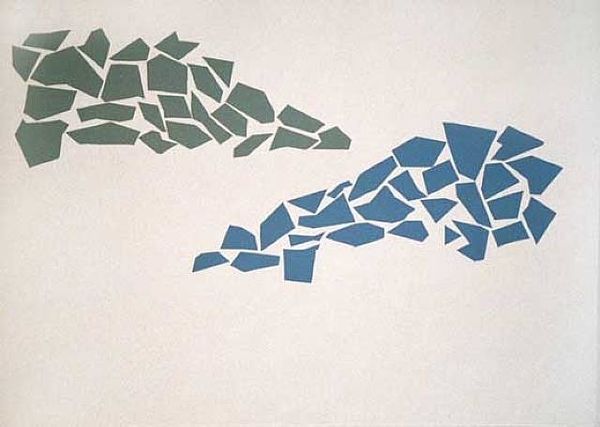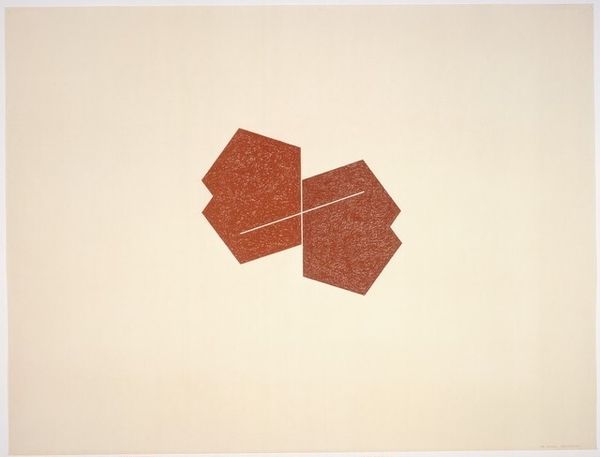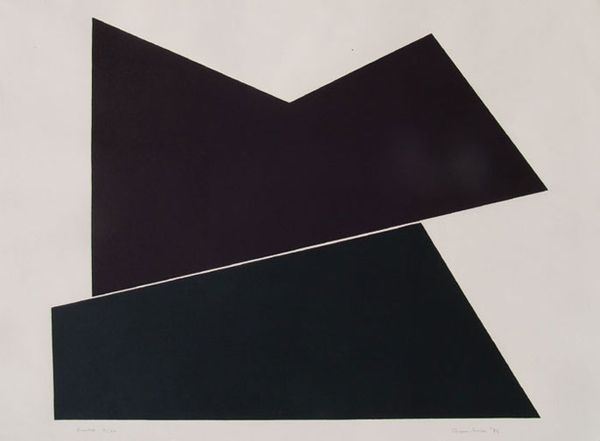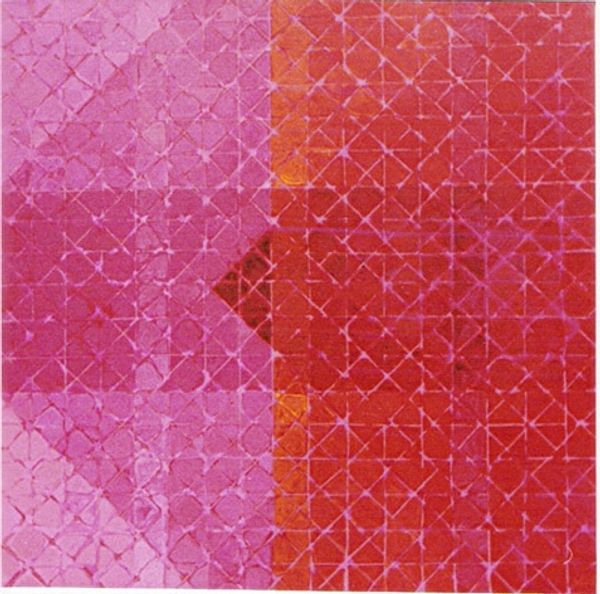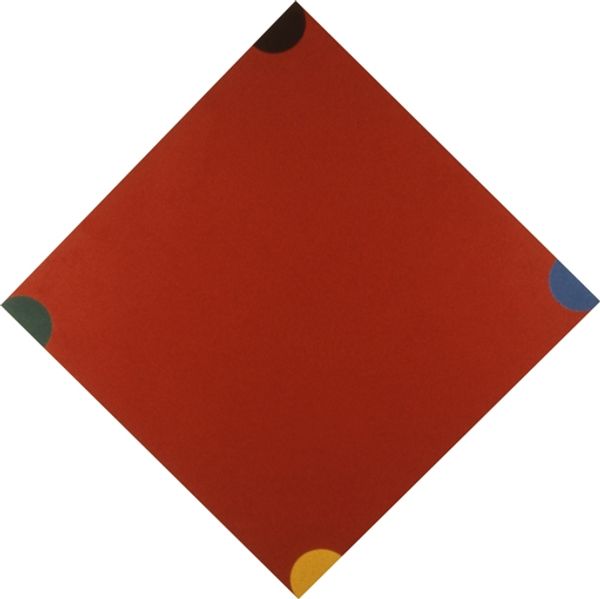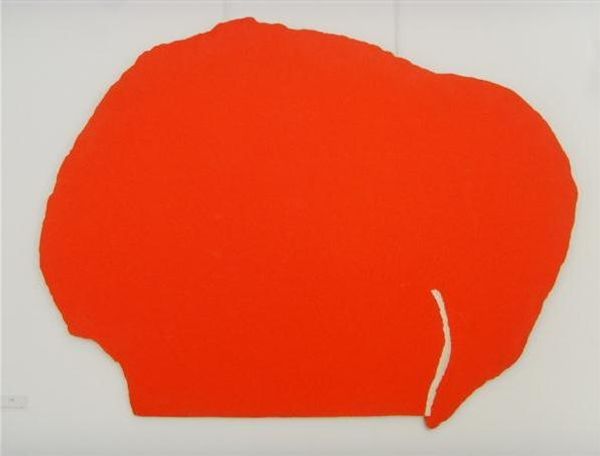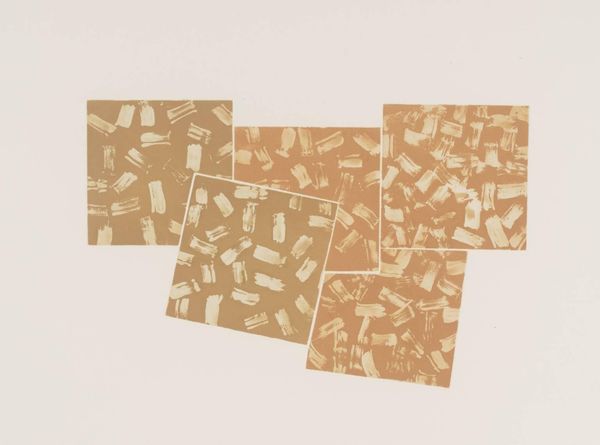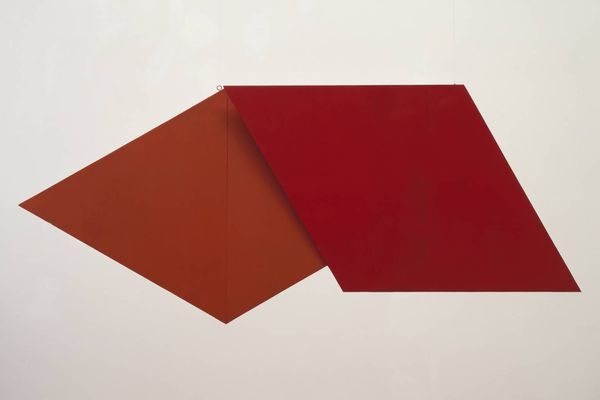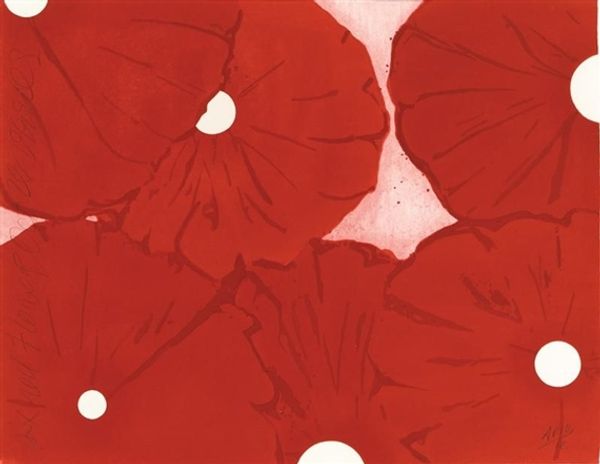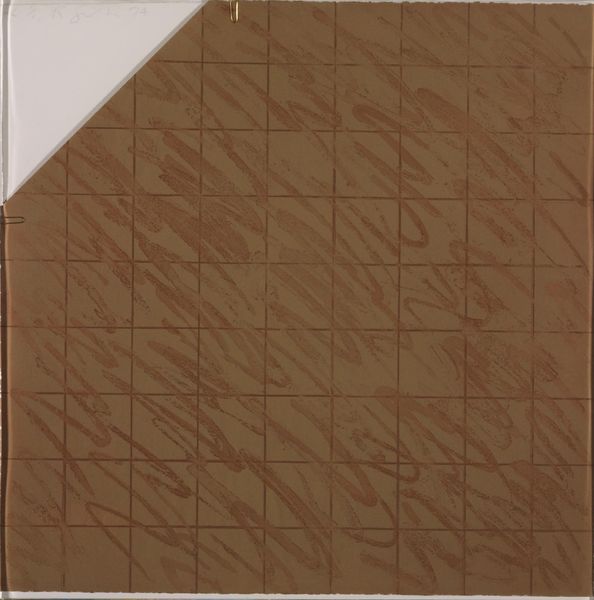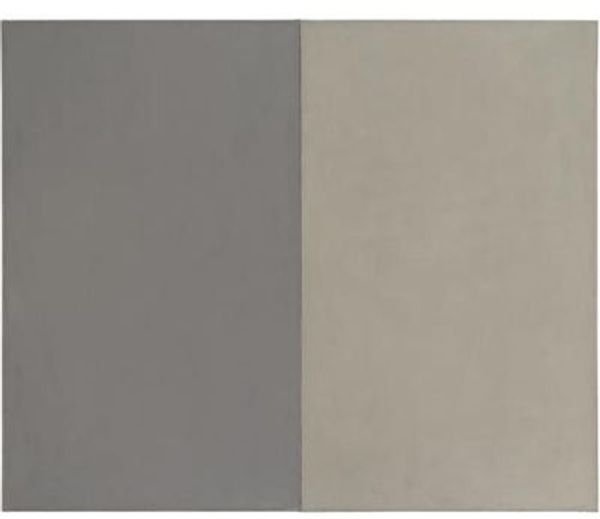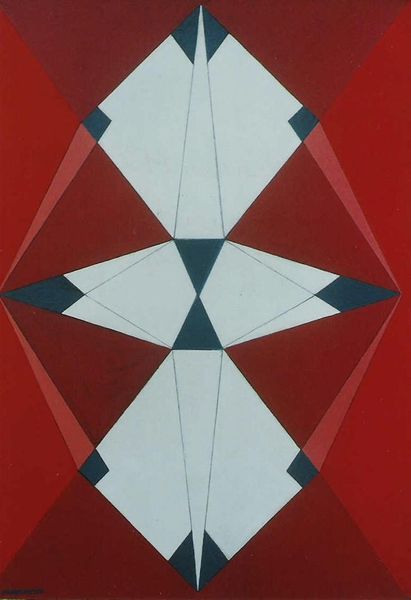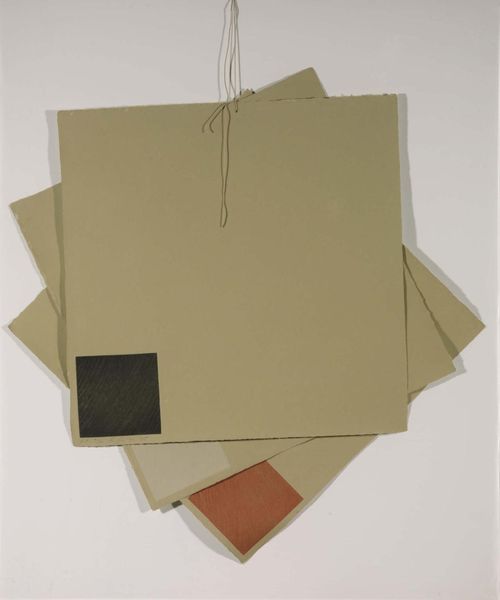
acrylic-paint
#
abstract-expressionism
#
acrylic-paint
#
geometric
#
abstraction
#
hard-edge-painting
Copyright: Robert Goodnough,Fair Use
Curator: Before us is "Large Fragmented Shapes," a striking acrylic on canvas piece crafted by Robert Goodnough in 1968. It's a wonderful example of hard-edge painting, born from the abstract expressionist movement. Editor: My first thought is "explosion." Or maybe shattered glass. These powerful geometric shapes, painted in a singular intense hue, against that cream background create an amazing tension. It makes you question balance and order, somehow. Curator: Goodnough transitioned to this style around that time. He was always deeply invested in exploring shape and space within his canvases, initially in a way more closely related to action painting before streamlining his vision with flat color and sharp delineations. Editor: This reminds me a bit of early computer graphics. The simplified forms, the stark color contrast... I'm curious about the social and political climate influencing his artistic choices then. 1968 was, to put it mildly, a tumultuous year. Was he reacting to the fragmentation of societal norms? Curator: Absolutely! Consider the anti-war protests, the Civil Rights movement… It’s vital to view it within that chaotic era. We must delve into not only what he put onto the canvas, but the prevailing questions regarding power, structure and freedom. This abstraction itself is a form of social commentary, questioning existing structures. Editor: Do you think the 'fragmentation' specifically relates to the broken promises of social progress that occurred that year? Is it about visualizing that? Curator: Perhaps. Goodnough never overtly politicized his work. Yet, the very act of dismantling familiar forms and rebuilding them through pure color and shape speaks volumes about challenging established systems and advocating for a new perspective on reality. He offers the tools. He isn't dictating their use. Editor: This pushes me to consider abstraction's purpose more. It often appears aloof to daily realities, when, really, it seems very conscious of its surroundings, finding novel, covert ways to critique power and dominant thought. Thank you, I'll need to think a bit longer about these "fragmented shapes." Curator: Indeed, I encourage that reflection! This is what Goodnough does so beautifully; it causes an opening in our ways of interpreting forms in art and their place within ourselves.
Comments
No comments
Be the first to comment and join the conversation on the ultimate creative platform.
